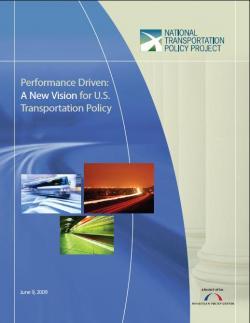Press Release: Bipartisan Policy Center’s National Transportation Policy Project to Host Hill Briefing
WHO: Former Congressman Sherwood Boehlert, Janet Kavinoky, Colin Peppard, Rob Puentes, and Kathy Ruffalo
WHAT: National Transportation Policy Project Briefing on practical strategies for beginning a transition to a performance-based national transportation program
WHEN: Wednesday, June 23, 2010 at 3:30PM
WHERE: Room 406, Dirksen Senate Office Building
Congressman Sherwood Boehlert and other leading transportation experts will discuss transitioning to a performance-based system
Washington, D.C. – The Bipartisan Policy Center’s (BPC) National Transportation Policy Project will host a briefing this Wednesday, June 23, 2010, at 3:30PM on transitioning to a performance-based federal surface transportation policy. The briefing will be held in 406 Dirksen.

Former Congressman Sherwood Boehlert, an NTPP co-chair, will welcome attendees to the event followed by a panel discussion with Janet Kavinoky, Director, Transportation and Infrastructure, U.S. Chamber of Commerce; Colin Peppard, Deputy Director, Federal Transportation Policy, National Resources Defense Council; Rob Puentes, Senior Fellow, Brookings Institution; and Kathy Ruffalo, President, Ruffalo and Associates.
In conjunction with this briefing, BPC will release its latest report, Transitioning to a Performance-Based Transportation Policy. The report details the steps necessary for building the foundation and capacity to successfully transition to a performance-based system. NTPP has been actively researching how to move U.S. transportation policy to a system that establishes a set of national goals and holds federal investments accountable for demonstrating results toward these goals.
NTPP released its blueprint for surface transportation reform, Performance Driven: A New Vision for U.S. Transportation Policy, last June, which called for a program with accountability and incentives for the achievement of clear national goals and interests. Along with Congressman Boehlert, NTPP is led by its other co-chairs: former Senator Slade Gorton; former Congressman Martin Sabo; and former Mayor of Detroit Dennis Archer, and is composed of a broad, bipartisan coalition of transportation experts and business and civic leaders.
Media interested in the attending the briefing should RSVP to press@bipartisanpolicy.org.

